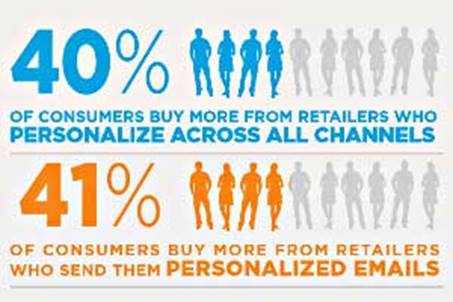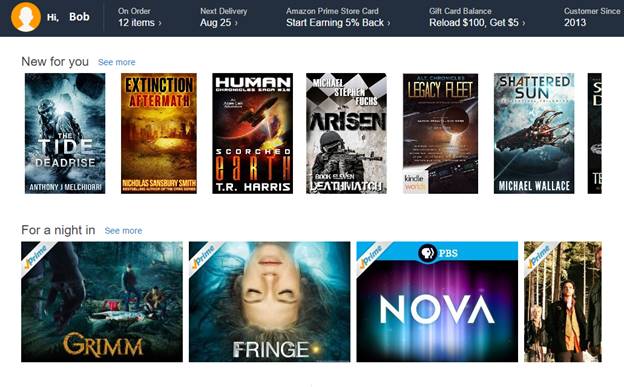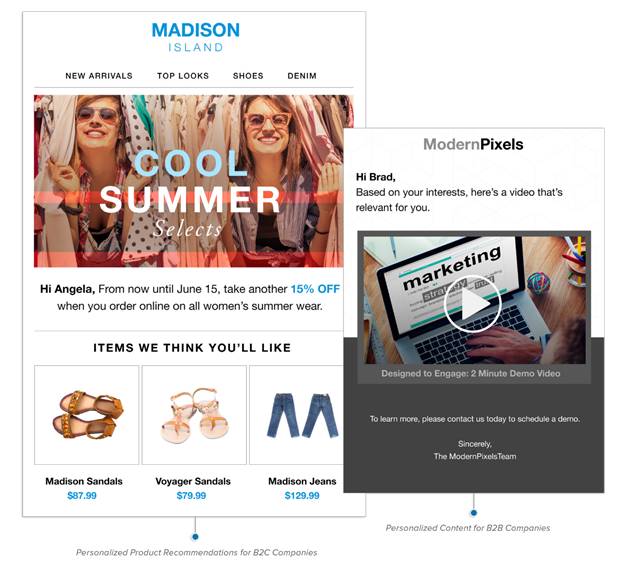Remember the days when customers would actually have to drive to brick-and-mortar stores to learn about products and make purchases? In one sense, the customer was invested by the time they got to the store, in another, businesses had limited reach.
Now in the world of modern marketing online, reach is exponentially increased but keeping customers engaged with your site is the challenge. If something doesn’t feel right to the customer, they can go to a competitor with a simple click.
How do you get customers to your checkout page again and again? One key factor is having the ability to personalise your website to a specific customer’s preferences. This is known as personalisation and it’s the latest development you can take advantage of to improve your customer’s online shopping experience. Econsultancy reported in 2015 that company and agency respondents considered targeting and personalisation their top priorities for their organisations and clients.

Why are companies so invested in these top two areas? Maybe it’s because 73% of consumers have been reported by Digital Trends to prefer doing business with brands that use personal information to make their shopping experience more relevant. Or, it could be the 83% of consumers reported to say personalisation plays a role in their decision to purchase. The research continues to back up that personalisation works with Monetate finding the following:

What is Personalisation?
Many companies are confused about what personalisation is exactly. It can range from a simple method of tweaking the website in ways that make it more interesting for the consumer, to a full out alteration of content, product, and information dependent on collected information from the user themselves.
In a nutshell, personalisation is giving the website visitor an individualised experience so that they see only things that are relevant to them. In theory, a website that is able to do this could make customers more interested in returning at a later time; like returning to a store where a sales associate has helped you and knows your needs.

This is not to be confused with customisation as that involves settings that a customer can set for the website. Personalisation is automatically done by the website itself. See the example above from Etsy. The shopper has been looking at cases for the Macbook so when they log in, they are greeted by name with recommended picks based on previous browsing.
How Does Personalisation Work?
Personalisation can be as simple or as complex as the owner of the website wants it. It can be simply retrieving the user’s name and having the website refer content to them, or it can be complex using an algorithm that searches prior viewing and reading habits and then provides articles, emails, and products based upon those habits.

As an example, when you log in to Amazon.com (as pictured above), you see that the website shows you prior products you have looked at, as well as products you might be interested in, and any that may have changed in price while you were gone. In this example, Bob gets to see new books he may be interested in based on his past reading. How nice of them, right!? Yes, that is the goal; for the user to find your recommendations super helpful.
Personalisation on Mobile
In talking about personalisation, it is important to touch on the role mobile devices play in this tactic. More and more consumers are shopping through their mobile device’s browser or apps, enabling companies to take personalisation a step further by gathering more data, more often. Starbucks, for example, created an app as part of their digital loyalty programme. The app allows customers to order and pay through their mobile devices. It collects data on past purchases and activity in order to provide relevant suggestions and recommendations in the moment of the order. It also offers rewards based on past spending which can be redeemed in the order process on the app. This app has accounted for up to 20% of sales in some of their stores. Not only that, it has created a way to learn even more about customers; what they like, where they shop, how much they spend, etc. which makes sophisticated personalisation of their users possible.
What Tools Do I Need?
You may wonder how you can create a personalised experience for your visitors as it seems like it would require some technical “know-how”. However, there are many tools out there that make it easy. Here are a few mainstream vendors that are reputable and well known for their Personalisation services:
Optimizely is a platform that provides A/B testing and personalisation services for websites. It is one of the leading optimization services in the world and many leading brands such as Sony, Spotify, Microsoft, Walt Disney, and the New York Times have used it. The platform helps organisations run experiments in order to gather the data needed to make better decisions. It allows businesses to easily apply those findings in order to deliver targeted relevant experiences to audiences.
Evergage is an all in one package that gives you the tools to implement a dynamic, personalised website to your consumers. It is a platform all ready to go, it understands the concept of profiles and how to use them to present appropriate material and allows you to engage the user with relevant information. As pictured below, you can reach beyond the website into personalised emails as well.

Granify If the only place that someone wants the personalisation is within their e-commerce site, Granify is another good tool. Easy to install, it has the ability to watch the consumers that come to it, analyse their behaviour, and figure out why they might not want to purchase an item. Granify then shows a solution to the problem raising the consumer awareness and trust in the site. All this is done without the website host’s need to be involved. If a customer considers buying a hat for example, but doesn’t buy it because it might not fit, Granify will see this and remind the customer that returns are easy to do.

Marketo functions in a similar way except they are geared to providing web content like articles and videos on multiple platforms. The advantage of this program is that it can help keep track of all the information users provide while visiting and can find the most relevant pages to their searches. It also can keep a consistency across all platforms from computers to smartphones and tablets.
If you would prefer a more hands-off approach, you can also hire a conversion rate optimisation (CRO) team who understands personalisation and can apply this technique to your site without any additional resources. It’s important to note that Personalisation, like any conversion rate optimisation (CRO) technique, is not a one-time fix. It is an ongoing process of trial and testing to find out what works best for your ever-changing customers.
Know the Boundaries
Even with how awesome all this personalisation is, it is very important that it does not extend into the world of creepy. Consumers do not want websites and shopping experiences to be overly personal.
Pew Research Center found that 86% of Internet users have taken steps to mask or remove their digital footprint in the last few years and 68% feel that there are not enough good laws to protect them online. This creates a situation where a company that is over personal may make a consumer feel that they are being watched and like the company knows too much about them. It could be the deal breaker that makes a customer decide not to return or buy.
Though the concept of personalisation has been out for quite some time, companies are still in the process of finding a balance between being friendly and helpful, while not acting like Big Brother who knows everything.
Is My Website Ready for Personalisation? How Can I Get Started?
So, are you ready to get started? If so, the sooner you get on board the better. Many companies have already adopted this tactic to build more personal relationships with their customers and not doing so will put you at a disadvantage. Customers will opt for the companies who tailor to meet their needs, so you want to be that company.
In closing, personalisation is a tool that takes advantage of the analytics available to create a better experience for your shoppers. By combining it with good products and other website techniques, you will be well on your way to conversion rates that are worth talking about. What are you waiting for? Contact our conversion rate optimisation (CRO) experts today to find out how we can implement personalisation on your site.

